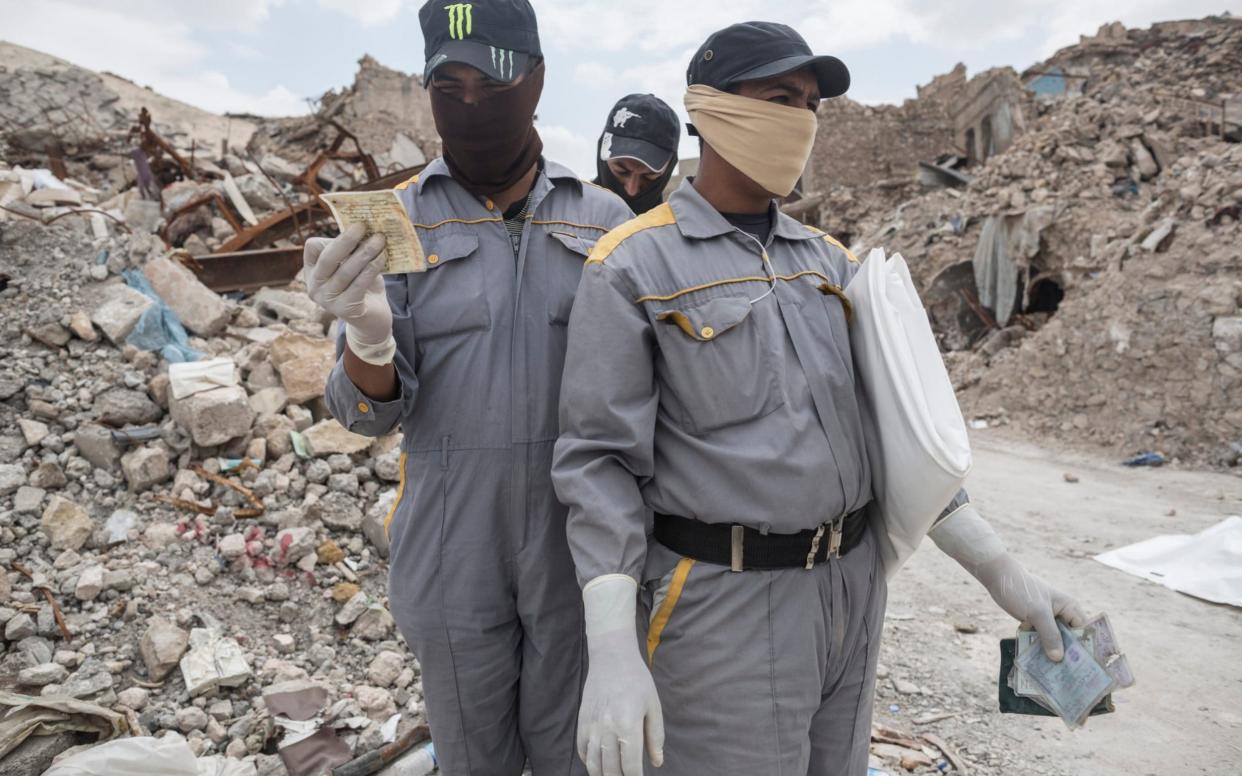Bodies of nearly 100 'unarmed civilians' killed by IS found buried in Mosul rubble

The bodies of nearly 100 "unarmed civilians" who were killed by the Islamic State Group have been found in Mosul, according to the civil defence, highlighting the ongoing shadow cast by the terror group even three and a half years after the liberation of the city.
Iraqi civil defence rescue teams retrieved 93 bodies from separate neighbourhoods in Old Mosul while clearing rubble, Brigadier General Hussam Khalil, told Iraqi state’s al-Sabaah news agency on Tuesday.
The bodies were taken to Mosul’s Forensic Medicine Department for the DNA to be checked to see if it matched that of civilians reported missing or IS members. These were found to be civilians.
The discoveries were made in neighbourhoods and government institutions where “IS terrorists used to detain innocent citizens” and “execute them en masse”, said Brig. Khalil.
Every week, bodies continue to be found underneath the rubble of Iraq’s second city as it slowly tries to rebuild from three years of IS occupation and one of the fiercest air campaigns to defeat the terrorist group.
Between 9,000 and 11,000 civilians alone are estimated to have been killed in the nine-month battle to free the city from the terror group between October 2016 and July 2017.
Trapped in economic crisis, the rebuilding process in Mosul has so far been slow.
Speaking to The Telegraph in Mosul at the end of 2019, the civil defence’s Captain Saad said the formal campaign to retrieve bodies was over, now they only send teams out when they are specifically called out, which happens around once or twice a week.
Around 5,000 bodies are estimated to have been found since the liberation, but many more corpses may still be trapped underneath collapsed buildings whose owners have not yet returned.
“Most people have to stay in [IDP camps]," he said. “There is no financial incentive to rebuild their homes. They do not have the money, it’s an impossibility for them. So if they are not coming back to rebuild, we do not know if there are bodies still underneath the rubble.”

